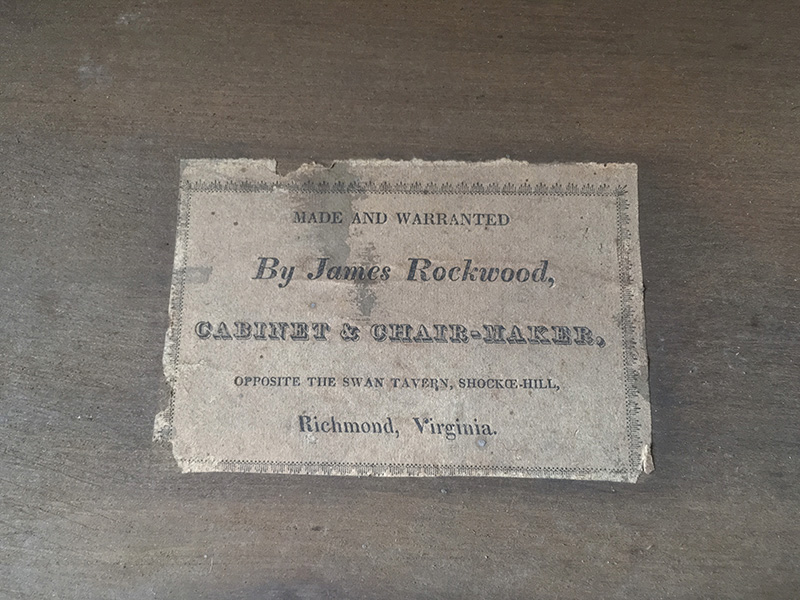
Improbable as it may seem, the city of Richmond, Virginia, has never had an exhibition dedicated to its furniture. That is, until now. Classical Richmond Furniture: Early American History and Craftsmanship in Virginia’s Capital, at the historic John Marshall House in the city’s Court End neighborhood until June 30, aims to tell the story of the commonwealth’s early-nineteenth-century classicizing craze via forty tables, chairs, clocks, and case pieces, some of which are on public view for the first time.

In 1780 the capital of Virginia was moved inland, from Williamsburg to the more centrally-located Richmond. By 1820, the city was home to more than twelve thousand residents, many of whom were involved in the flourishing tobacco, flour, coal, and iron industries. As was the case in many early-American cities, Richmond’s citizens looked to contribute to a new sense of national identity. When a new capitol building was commissioned (Thomas Jefferson contributed its neoclassical design), skilled artisans versed in the classical styles popular at the time migrated to the city, and, soon, furniture incorporating ancient Greek and Roman motifs was being manufactured. Classical columns appeared on clocks, sideboards, and wash stands. The urn form became prominent not only as a central pedestal for candle stands and tea tables, but even as supportive feet for case pieces, as did paw feet, which harkened back to Greek, Etruscan, and Roman prototypes. While some Richmond cabinetmakers imported pre-made parts from the north, others developed methods of turning and carving that imparted to their work a distinctly southern flavor.

Card table by James Rockwood, c. 1815. Brook Hill estate, Henrico County, Virginia.
The card table (left) bears the label “MADE AND WARRANTED/ By James Rockwood,/ CABINET & CHAIR-MAKER,/ OPPOSITE THE SWAN TAVERN, SHOCKŒ-HILL,/ Richmond, Virginia.”
Among the fine pieces of furniture on view at the John Marshall House are a pair of extremely rare James Rockwood card tables from the Brook Hill estate in nearby Henrico County, a Chauncey Jerome shelf clock, and a sophisticated tea table with a turned-urn central pedestal, reeded saber legs, and brass paw feet whose maker, sadly, remains unknown. In conjunction with the exhibition, Preservation Virginia is hosting a series of events and programs featuring Colonial Williamsburg’s chief curator Ronald L. Hurst and curator of furniture Tara Chicirda, as well as dealer Sumpter Priddy, among others.
Classical Richmond Furniture: Early American History and Craftsmanship in Virginia’s Capital was curated by Michael S. Phillips, a Richmond scholar and collector.
